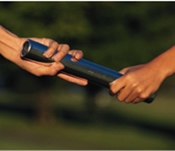The best approach to sustainable safety excellence is through Partner-Centered Safety.
This is a proven, robust way for dedicated people to work together to get the excellent safety results they want to achieve. All dimensions of occupational safety and health as well as process safety management are positively impacted when people work this way.
 There are three main aspects to Partner-Centered Safety.
There are three main aspects to Partner-Centered Safety.
- Developing mutual respect for and valuing each other as real people is critical. My safety mantra was “I don’t have a right to make my living in a place where it is okay for you to get hurt. Now let’s figure out how to work safely and make a profitable business.” With this message, I was trying to convey my deep respect and value for them as individuals. The people really appreciated this way of being together.
- Talking, listening and thinking together, looking for the best solutions and possibilities opened up new ways to do our work, building credibility, trust and interdependence. All of us brought our various experiences, skills and insights into the discussions as equals with a passion for excellence in safety and production. The decisions were made with the best thinking and technology we had rather than by arbitrary, do it my way, orders.
- Our culture shifted so that there was order, some stability and some control along with an openness to freely talking and thinking together to find the best solutions. The ambiguity of order and freedom worked very well as long as we were in constant conversation. For example, we learned to live in the need to have excellent safety and production at the same time.
As we worked this way good ideas bubbled up, new thinking developed, safety improved to Total Injury Rates at 0.3 or better and people discovered that they could sustain this for years (over 17 years in one case). At the same time earnings, productivity and environmental performance improved significantly.





